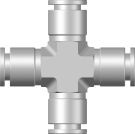Fluid control systems are highly efficient valves and tubings which can help regulate product flow in various industries. Use of stainless steel components ensures resistance to corrosion and longer life.
From valves to couplings, a number of products are available from major sealing manufacturers. A single industry may utilize several different products.
In some cases, two or more different valves may be needed at a single point. When these are block and bleed valves, you can replace them with a single valve- the double block and bleed valve.
Let’s learn a bit more about these valves.
What are double block and bleed valves?
By definition, it is a single valve which has two seating surfaces. In a closed position, these offer a seal against pressure applied from the two different ends of the valve. This is done by venting or bleeding the cavity present between the seating surfaces.
In essence, these valves are used to replace traditional mechanism of generating a double block and bleed configuration within the pipeline. These are used for critical applications, especially those where high pressure valves are required. Industrial applications include chemical seal isolation, instrument drain and gauge isolation.
Why use these valves?
These valves have evolved to replace bolting of individual valves together to achieve dual isolation. These assemblies ensure greater isolation as well as savings in terms of space, weight and installations.
As much as 60% and 70% savings for weight and installation times, respectively, are possible. The best savings are, however, in leak path reductions to atmosphere, decreasing risk of potential hazards.
The double block and bleed DBB series particularly works as three separate valves – one drain and two isolation valves. Hence, these can offer savings on the higher side of the range promised by such manifolds, particularly for space and weight.
This helps free up space for other instrumentation, making the configuration of the overall system more efficient.
Where to buy DBB valves from?
While there are several manufacturers who can provide you these valves, we recommend choosing the products which are factory tested. SealExcel ensure each of these valves is tested and offers fire safe designs. This makes them a preferred choice for industrial use.
These valves are used for multiple applications, including instrument isolation, gauge isolation, instrument drain, chemical injection connection, sample connection, chemical seal instrument isolation, piping / instrument interface, direct mounting of instruments and remote mounting of instruments.
In addition to these valves, the company also offers check, bleed and purge valves for various applications.







